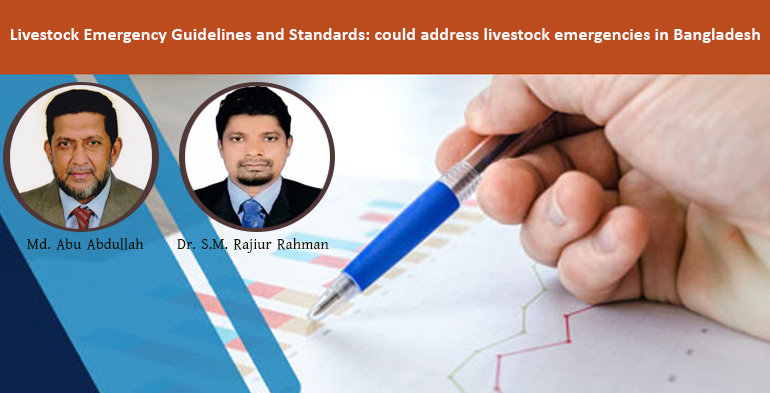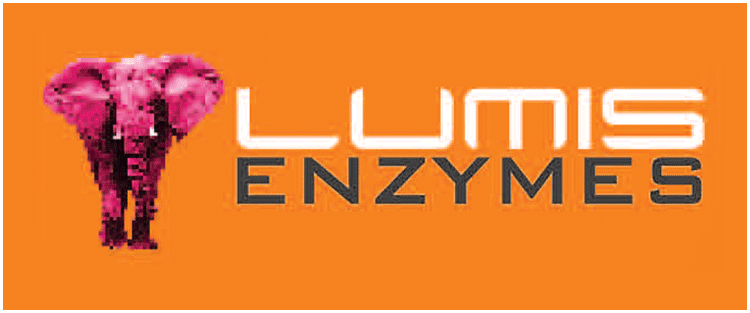
Dr. S.M. Rajiur Rahman1 Md. Abu Abdullah2
Bangladesh is a disaster-prone country. Cyclones, tropical storms, tornados, floods, drought, salinity, and disease outbreaks are common disasters in our country. In any disaster livestock-based livelihood goes down worse situation than an agricultural livelihood. Livestock keepers affected by disasters are needed appropriate immediate relief and longer-term livelihood support.
Livestock experts and humanitarians all over the world both from rich and poor countries are working to address these emergencies. Livestock is a crucial livelihood asset for people all over the world. Therefore, livestock emergencies affect and influence the lives of billions throughout the globe. Timely analysis and proper decision-making during natural disasters can reduce damage and help to revive normality.
In the early 2000 s, individuals and agencies involved in livestock emergency response began to question the quality, usefulness, and sustainability of interventions. African Union International Bureau of Animal Resources organized a workshop in Kenya in 2004 and identified the need for agreed standards and guidelines.
The first steering group meeting for Livestock Emergency Guidelines and Standards (LEGS) project was held in Addis Ababa in 2006. They conducted threadbare consultation and field testing in 2008 and finally published the first edition of the LEGS handbook in 2009 in Addis Ababa.
The second edition of the LEGS handbook has been published in 2015 and translated into French, Spanish, Arabic, Mongolian, Vietnamese, and Thai languages. The process is underway to publish the revised third edition of the handbook in 2023.
What is LEGS? Livestock Emergency Guidelines and Standards (LEGS) is a set of international guidelines and standards for designing, implementing, and evaluating livestock interventions to help people affected by humanitarian crises. LEGS is based on three livelihood objectives: to provide rapid assistance, to protect livestock assets, and to rebuild livestock assets of crisis-affected communities.
LEGS supports the saving of both lives and livelihoods through two key strategies. Firstly, LEGS helps identify the most appropriate livestock interventions during emergencies, and secondly provides standards, key actions, and guidance notes for these interventions based on good practice.
Who should use LEGS? LEGS can be used by anyone who is involved in livestock-related activities in emergencies. Specially people who provide emergency assistance in areas where livestock make an important contribution to human livelihoods; that is aid organizations, bi-and multilateral agencies, and government. It is also relevant to policy and decision-makers in donor and government agencies, whose funding and implementation decisions affect emergency response. And finally educational institutions and community-based organizations.
The scope and approach of LEGS are quite very wide. LEGS focuses on the areas where emergencies, livelihood, and livestock overlap, emphasizing the need to protect livestock during emergencies as well as to help with rebuilding livestock assets afterward. Core standards include participation, preparedness, competencies, initial assessment, technical assessment, monitoring and evaluation, policy advocacy, and coordination. It covers veterinary support, feed supplies, provision of water, livestock destocking, shelter, and settlement. LEGS covers all types of livestock, from small species such as chickens to large animals such as cattle, buffalo, or camels, including animals used for transport or draught power.
LEGS covers rural communities as well as peri-urban and urban livestock keepers. LEGS also provides guidance on livestock kept by displaced people, including those living in camps. This guideline covers immediate emergency response to development. Preparedness is a significant aspect of emergency response in LEGS, as is the importance of preserving livelihood assets to protect future livelihood and to save lives.
LEGS are complementary to other available standards and guidelines. The United Nations, Food and Agricultural Organizations (FAO) published a practical manual in 2005 for livestock interventions in emergencies to complement LEGS. LEGS is designed to complement the Humanitarian Charter and Minimum Standards in humanitarian response of the sphere handbook. LEGS aims to complement national guidelines for emergency livestock responses and it could be used to develop new national guidelines.
James Sawyer, Director of Disaster Management, of World Animal Protection says, LEGS is an essential part of the toolkit for humanitarians who come to contact with animals through their work. We use LEGS in our disaster assessment work and for training governments in appropriate responses to livestock emergencies. Well thought-through and practical by nature, we endorse these guidelines and standards.
Rohingya refugee is the most recent crisis in Bangladesh. The livelihoods of the poor host community are largely affected by the Rohingya refugee. Moreover, the COVID-19 pandemic is another threat in recent times. All these calamities have a great impact on lives and livelihoods, which makes a serious concern for animal protein, particularly for children, women, and aged people. Under prolonged crisis, humans and animals may be more susceptible to certain diseases (i.e. brucellosis, tuberculosis, avian influenza, Nipa) which leads to low consumption of animal protein in the community.
Bangladesh can easily adopt LEGS for the design, implementation, and assessment of livestock intervention with technical response in an emergency to assist people affected by the humanitarian crisis. Therefore, our humanitarian experts, extension personnel, and policymakers need to be trained in LEGS standards and tools to design a response program.
LEGS training was organized by the Emergency Center for Transboundary Animal Disease (ECTAD) and Food and Agricultural Organizations (FAO) in Khulna and Barishal a few years back. A total of 45 mid-level government officers from the Directorate of Livestock Services attended this training course. In the course evaluation feedback, 18 participants out of 20 from Khulna opined that training was very helpful for them. As they are working in disaster-prone coastal areas where disaster cyclones and salinity heat frequently, this training will be very helpful to discharge their duties. While two other participants say, they had to work in coordination with local administration and emphasize the protection of human life during emergencies.
Training participants from Barishal except one out of 19 said the course was very relevant to their work. Four participants noted that they always face disasters in their working areas, so this training knowledge would help them to design better response programs in the future. They will disseminate their knowledge to other stakeholders too.
World Food Program (WFP) office in Dhaka and FAO Bangladesh also organized similar LEGS training in Dhaka in 2019 with different participants who were working in humanitarian and livestock response. This three-day long training was attended by 21 participants, of them, six were nominated by the government, four by Non-Government Organizations, six by International Non-Government organizations, and five by United Nations Agencies in Dhaka. These participants stated that it will be very much helpful in their field activities. The training ended with a positive evaluation made by all participants about the content, process, and facilitation.
LEGS ensures quality health care for livestock during emergencies, and create awareness among stakeholders for further improvement. These standards and guidelines could act as a model and inspiration for our country.
As we are an agriculture-based country and frequently affected by several types of disasters, our livestock sub-sector could take the benefit of utilizing the LEGS strategy. LEGS' work plan might be very effective and helpful for Bangladesh.
Writer:
1Dr. S. M. Rajiur Rahman, Accredited Trainer for LEGS Approach; National Livestock and Dairy Expert, United Nations Industrial Development Organization (UNIDO), email:This email address is being protected from spambots. You need JavaScript enabled to view it.
2Md Abu Abdullah, Additional Secretary (Retd.), email: This email address is being protected from spambots. You need JavaScript enabled to view it.





















